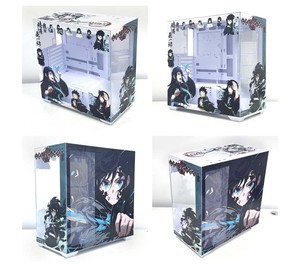Main Parts of a Personal Computer: An Overview
Understanding the main parts of a personal computer (PC) is essential for anyone looking to build, upgrade, or even just utilize their computer more effectively. A personal computer is a sophisticated blend of hardware and software components that work together to fulfill various functions. Each component has its unique role, contributing to the overall performance and efficiency of the device. The main parts of a personal computer include the central processing unit (CPU), motherboard, memory, storage devices, graphics card, and power supply. Let's explore these components in detail.
Types of Main Parts of a Personal Computer
When discussing the main parts of personal computers, it is beneficial to categorize them based on their functions. This classification helps in understanding how each part interacts with the others:
- Central Processing Unit (CPU): Often referred to as the brain of the computer, the CPU executes instructions and processes data. There are different types of CPUs available based on processing power and architecture, such as Intel and AMD.
- Motherboard: This main circuit board houses the CPU, memory, and other peripherals. It supports communication between all parts through buses and connectors.
- Memory (RAM): Random Access Memory is volatile storage that temporarily holds data for currently running applications. Types include DDR3, DDR4, and DDR5, with varying speeds and capacities.
- Storage Drives: Main storage units can be hard disk drives (HDD) or solid-state drives (SSD), with SSDs being faster and more reliable than traditional HDDs.
- Graphics Card: Essential for rendering images and video, graphics cards come as integrated options within the CPU or as standalone units for better performance.
- Power Supply Unit (PSU): This component converts electricity from an outlet into usable power for the other parts of the PC, ensuring reliable performance.
Applications of Main Parts in Personal Computers
The main parts of personal computers are utilized in various applications across multiple fields. From gaming to professional work, understanding their application can help users make informed choices:
- Gaming: High-performance graphics cards and CPUs are essential for a seamless gaming experience. Advanced cooling systems also play a crucial role in maintaining performance.
- Professional Workstations: For tasks such as video editing, graphic design, or software development, powerful CPUs and ample RAM enhance productivity significantly.
- Everyday Computing: For general tasks like web browsing, word processing, and media consumption, standard configurations with balanced components suffice.
- Server Applications: In enterprise environments, specialized components are required to ensure reliability, speed, and data integrity.
Features and Advantages of Main Parts of a Personal Computer
Each of the main parts of a personal computer comes with specific features that contribute to its performance and usability:
- Performance: High clock speeds and multi-core architectures in CPUs enhance processing capabilities, improving multitasking.
- Scalability: The modular nature of PCs allows for easy upgrades, letting users enhance their systems over time as technology advances.
- Compatibility: Most components follow industry standards, making it easier to mix and match parts from different manufacturers for optimal configurations.
- Customizability: Users can choose specific parts based on their needs, ensuring a tailored experience that meets performance requirements.
- Reliability: Quality components come with warranties and support, ensuring that users can trust their systems for essential tasks.






















































